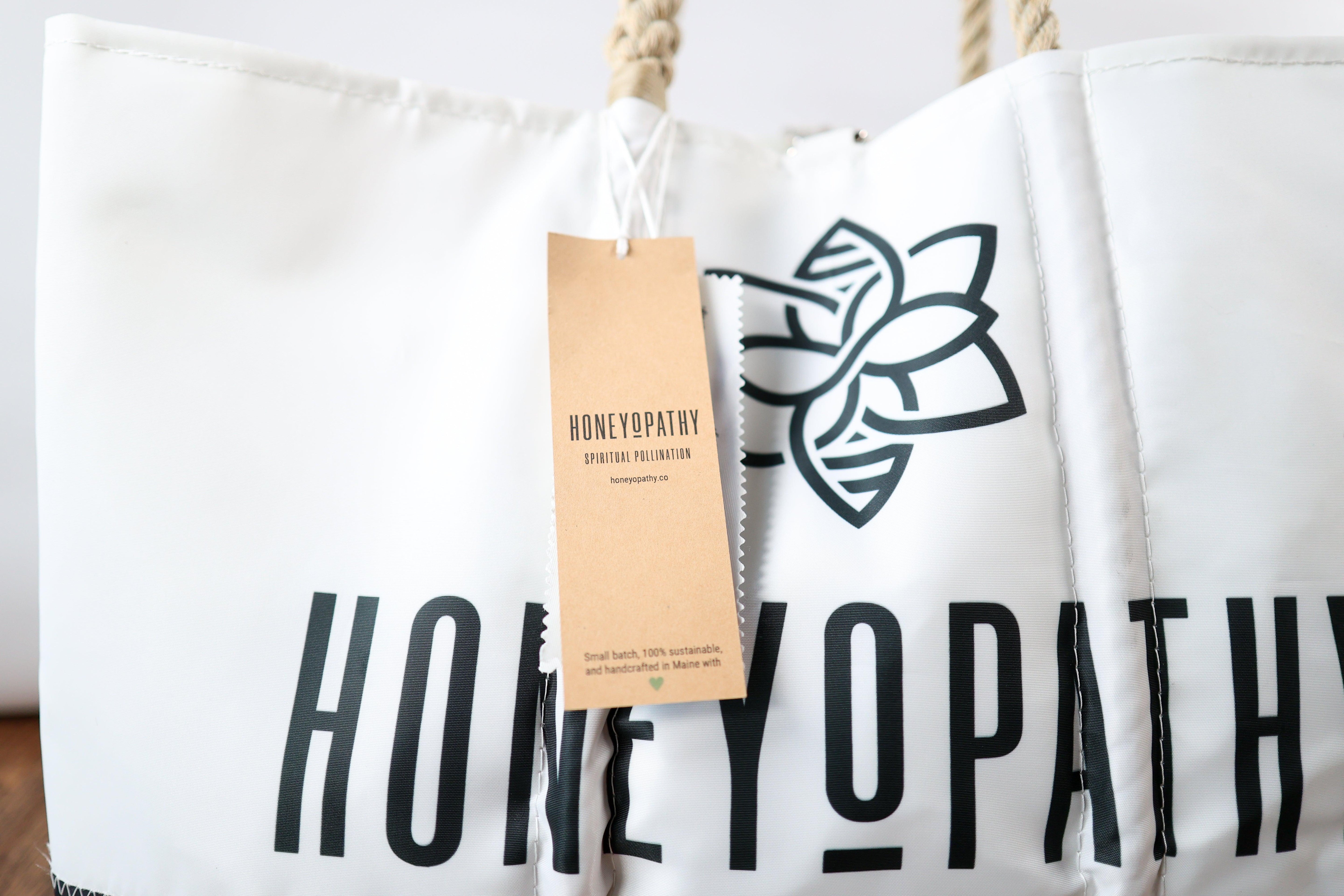Living in the western hills of Maine lends itself to so many natural resources that are pure and unadulterated. The water that pours down from the mountain feeds the natural springs which in turn creates our lake. There's very little light pollution or pollution from cars and factories. It's quiet and secluded and a safe place to raise honey bees. To feed our bees, we grow a diverse plethora of botanicals, fruit and vegetables. Our symbiotic relationship with our honey bees enriches our products. We are still learning so much from our community of beekeepers that meet regularly to share their knowledge of sustainable and ethical beekeeping practices.
At Honeyopathy, we infuse our raw honey by hand and with great care to maintain the integrity of the raw honey but you can buy local raw honey from a beekeeper and do the same!
How to Infuse Honey with Herbs
There are two main ways to infuse herbs into honey: without heat, or with heat. There are pros and cons to each method, so we've included both here for your reference.
The 'No Heat' Method
You can use natural sunlight to infuse herbs into raw honey which we believe is the best way to infuse your raw honey. It is the perfect temperature and won't degrade the rawness of your honey. You can use either live or dried plant material this way. At Honeyopathy, we use a 4:1 ratio (4 parts raw honey to 1 part dried botanical) but if you're using live plants, you can increase the amount to 3:1 and perhaps use the heated method for more potency.
Yields 1 quart (32 ounces).
Ingredients
- Dried organic herbs and spices of your choice
- Raw, ethically sourced, local honey (it's good to avoid grocery store bought honey since 78% of it is adulterated at best)
Directions
- Fill a clean quart mason jar a little less than halfway with dried herbs and spices.
- Pour in your raw honey and watch as it slowly finds its way to the bottom. Be sure that your herbs are fully submerged.
- Put a lid on the jar and place on a sunny windowsill or outside if it's summertime where you get full sun (this will keep it warm and allow the herbs to infuse).
- Turn the jar over at least once per day.
- Allow this mixture to infuse for at least one week (but longer is better which increases the flavor and medicinal value).
- Pour the honey through a strainer and keep in a warm dark place (about 60 degrees F) in a tightly sealed mason jar to maintain optimal freshness. There's no shelf life limitation because honey never goes bad.
- Don't discard the remaining botanical and use it for teas or any other warm drinks as a flavor booster!
The 'Heated' Method
If time is of the essence or it's winter time, it may be worthwhile to use heat to create your raw infused honey, and in order to maintain the integrity of the raw honey, you can't heat the honey higher than 140 degrees Fahrenheit. In addition, if you choose to infuse raw honey with fresh herbs, it's important to keep in mind that the extra moisture introduced into the infusion from the fresh material increases the risk of culturing undesirable bacteria that can cause your honey to ferment—like mead, but in an uncontrolled way. Moreover, if you're infusing your honey with dense, woody materials like bark and roots, it's better to use the heated method to help the infusion process along.
Watch as author and clinical herbalist Maria Noël Groves of Wintergreen Botanicals demonstrates how to infuse honey using heat (a method she learned from her teacher and mentor, famed herbalist Michael Moore).
Ingredients
- 1/2 cup dried or fresh organic herbs and spices of your choice
- 2 cups raw, ethically sourced, local honey (it's good to avoid grocery store bought honey since 78% of it is adulterated at best)
Directions
- Add your herbs to cold saucepan and place in a dutch oven or larger saucepan containing water.
- Pour your raw honey over the herbs and turn on stove heat to low.
- Stir to fold herbs into honey. This process will become easier as honey heats up. Heat very slowly and keep at a simmer--if you can use a thermometer, it's best to track the temperature so as to avoid going over 140 degrees F.
- Stir frequently and add more water to the larger saucepan as it evaporates.
- Repeat steps 3 and 4 several times, either throughout the day or over multiple days (covering between heatings to keep out insects).
- When the honey has infused to your taste, strain out the herbs and add it to a mason jar.
- Store your herb-infused honey in a warm, dark place (about 60 degrees F) to help maintain optimal freshness.
Pro Tips:
- You can skip the stove by using a yogurt maker (which keeps its heat around 100° F) or placing the jar in your car or a window during warm, sunny weather if you're determined enough :))
- Leftover honey residue and honey-soaked herbs can be used to make a sweet tea concentrate that can be diluted into a tasty hot or iced beverage.



















Leave a comment